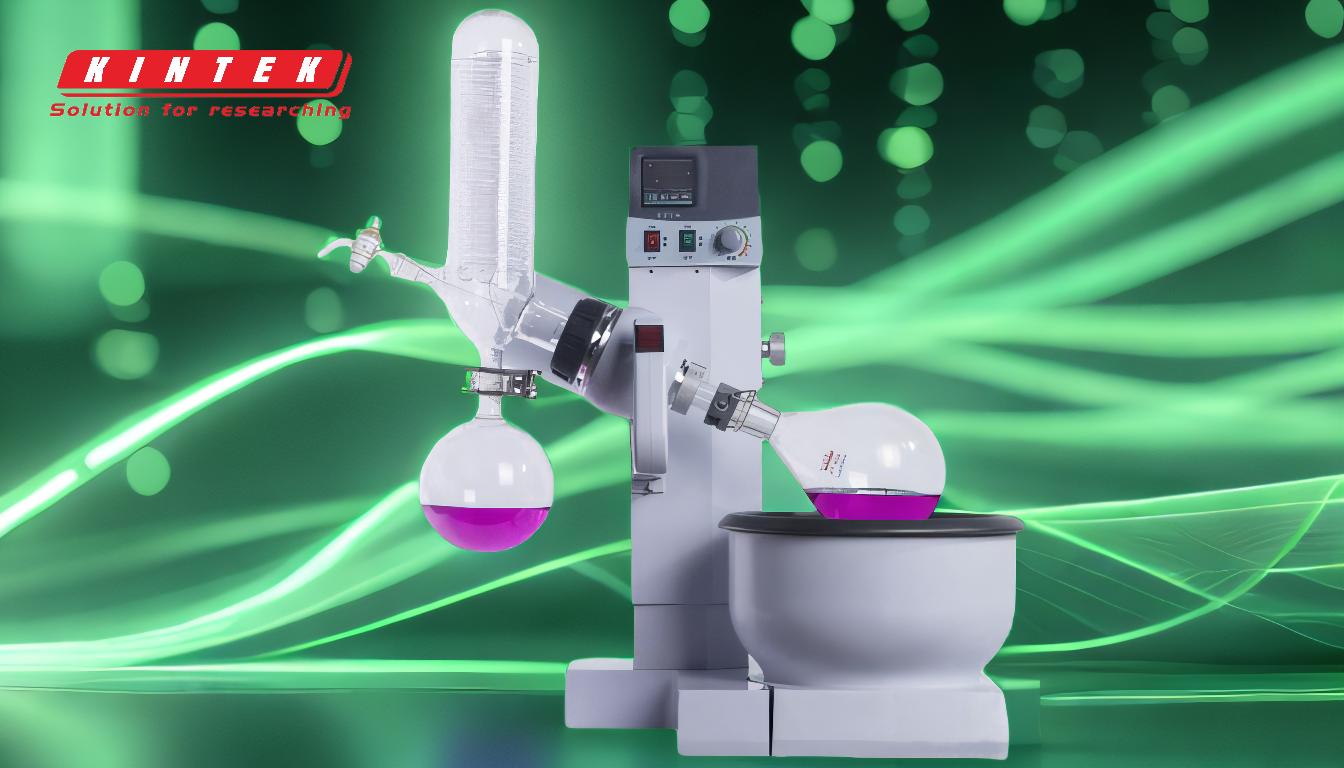Rotary evaporation, while a widely used technique for solvent removal and sample concentration, has several notable drawbacks. These include the potential for sample loss due to bumping, especially with ethanol-water mixtures, the single-sample processing limitation, and the risk of contamination from exposure to air. Additionally, the sealed components of the rotary evaporator require regular replacement, and frequent cleaning of the glassware is necessary to maintain purity. The technique is also unsuitable for foaming samples without specialized equipment, and the process can sometimes result in undesirable changes to the taste or aroma of the sample. Furthermore, the structure of rotary evaporators can be challenging to clean, increasing the risk of cross-contamination.
Key Points Explained:

-
Sample Loss Due to Bumping:
- Bumping, a phenomenon where sudden boiling causes sample splashing, is a common issue in rotary evaporation, particularly with ethanol-water mixtures.
- This can lead to significant sample loss, reducing recovery rates.
- Mitigation strategies include:
- Introducing a homogeneous phase.
- Adjusting vacuum strength or bath temperature.
- Using additives like boiling chips to promote uniform nucleation during evaporation.
-
Single-Sample Processing:
- Rotary evaporators can only process one sample at a time, unlike techniques like short-path distillation, which can handle multiple samples simultaneously.
- This limitation can be inefficient for high-throughput applications, requiring more time and resources.
-
Risk of Contamination:
- Sample materials may be exposed to air during the process, leading to contamination and impurities in the extracted materials.
- This exposure can compromise the quality and purity of the final product, especially in sensitive applications.
-
Frequent Cleaning and Maintenance:
- The glassware and sealed components of rotary evaporators require regular cleaning to prevent contamination from residual impurities.
- Sealed components, such as O-rings and gaskets, have a limited lifespan and need periodic replacement, adding to operational costs and downtime.
-
Unsuitability for Foaming Samples:
- Rotary evaporators are not ideal for foaming samples unless used with a defoamer or specialized condenser.
- Foaming can lead to sample loss and contamination, making the technique less versatile for certain types of samples.
-
Challenging Cleaning and Sanitization:
- The complex structure of rotary evaporators makes thorough cleaning and sanitization difficult, increasing the risk of cross-contamination.
- Bumping exacerbates this issue, as it can spread contaminants throughout the system.
-
Alteration of Sample Properties:
- The evaporation process can sometimes lead to undesirable changes in the taste or aroma of the sample.
- For example, certain aromatics that were balanced in the original liquid may become more pronounced in the precipitate, resulting in an unpleasant taste.
-
Spread of Distilled Substances:
- Distilled and concentrated substances often spread on the walls of the collection bottles, making recovery more challenging and potentially leading to sample loss.
By understanding these drawbacks, users can better evaluate whether rotary evaporation is the most suitable technique for their specific needs and take appropriate measures to mitigate its limitations.
Summary Table:
| Drawback | Description | Mitigation Strategies |
|---|---|---|
| Sample Loss Due to Bumping | Sudden boiling causes splashing, leading to sample loss. | Use boiling chips, adjust vacuum/temperature, or introduce a homogeneous phase. |
| Single-Sample Processing | Only one sample can be processed at a time. | Consider alternative techniques like short-path distillation for high-throughput needs. |
| Risk of Contamination | Exposure to air may introduce impurities. | Minimize air exposure and ensure proper sealing. |
| Frequent Cleaning/Maintenance | Glassware and sealed components require regular cleaning and replacement. | Schedule routine maintenance and replace worn parts promptly. |
| Unsuitability for Foaming | Foaming samples can cause contamination and sample loss. | Use defoamers or specialized condensers. |
| Challenging Cleaning | Complex structure increases cross-contamination risks. | Thoroughly clean and sanitize all components after each use. |
| **Alteration of Sample Properties | Evaporation may change taste or aroma. | Monitor process parameters to minimize undesirable changes. |
| Spread of Distilled Substances | Concentrated substances spread on bottle walls, making recovery difficult. | Use appropriate collection techniques to maximize recovery. |
Need help choosing the right evaporation technique for your lab? Contact our experts today for personalized advice!











